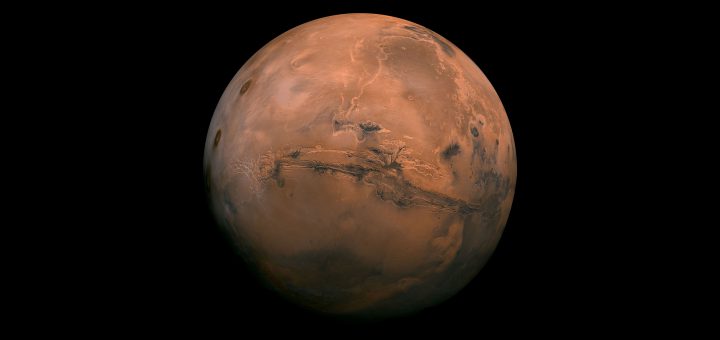Mars

The fourth planet from the Sun, Mars is the second most studied planet after our own, and is named after the Roman god of war.
Mars was not only the god of war, but also protected the Romans’ crops. In addition to the planet, the month March, Martius in Latin, is also named after him.
Ares is Mars’ counterpart in the Ancient Greek pantheon of gods.
While Venus is closer and more similar to Earth in terms of size, Venus’ thick acidic atmosphere, hellish surface temperatures and crushing pressure have made it hard a place to land on, and an unlikely candidate in our search for extraterrestrial life.
Although Mars is half the diameter of Earth, has 15 percent of our planet’s volume, and 38 percent of our gravity, it does have solid ice at the poles and under the surface.
And not too long ago, geologically speaking, Mars had running water and large oceans too.
Header image: Mars Valles Marineris Hemisphere Enhanced by NASA.
